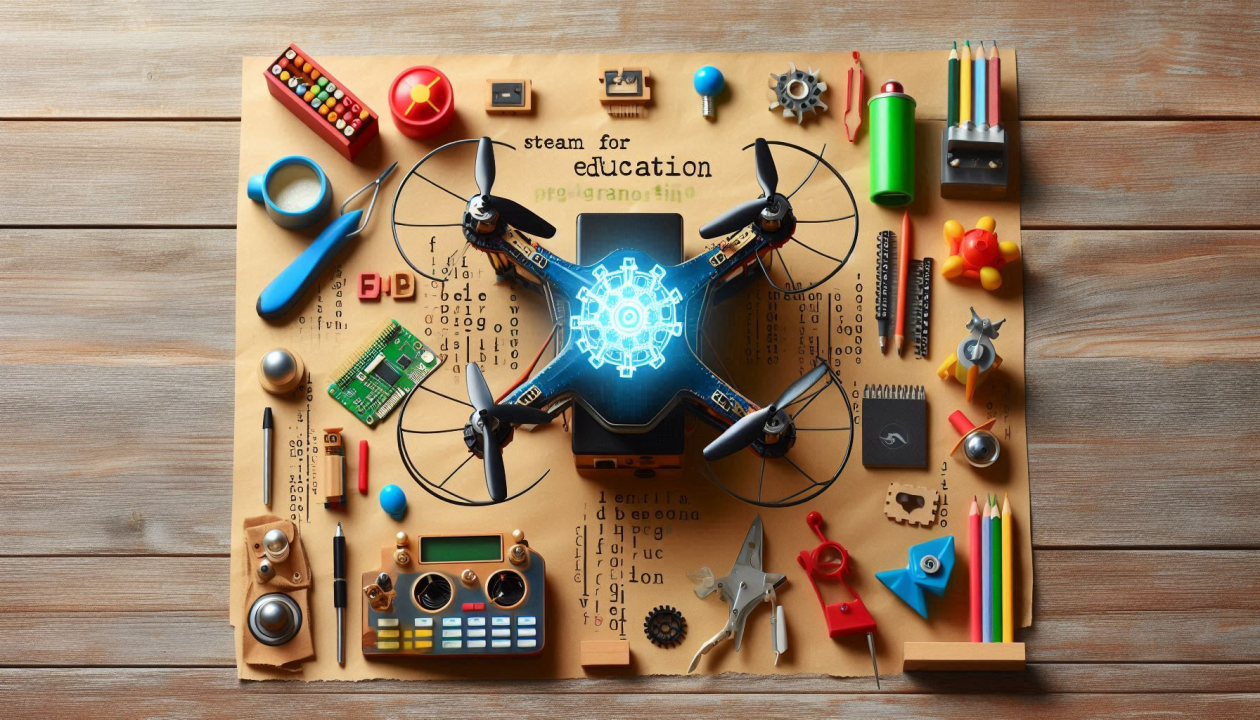
Disrupting K-12 Education in the UAE with Drones
Mohamed Shawky
23 Years Experience as Strategy Expert | Business Planning | Transportation | Drones & AI | Intelligent Automation | EduTech & PropTech | Master's in IT Management | Entrepreneur | Investor | Speaker
Introduction
Have you ever thought about how rapidly our world is changing, especially with technology evolving at lightning speed? As a parent or educator, you probably want the best for your kids, preparing them for a future where they can thrive. Well, one of the most exciting and disruptive technologies making waves in education is drones. Trust me, they're not just cool gadgets; they can transform the way our kids learn and understand the world around them.
The UAE’s Educational Landscape
Living in the UAE, we're fortunate to be part of a forward-thinking nation that embraces innovation. Our K-12 education system is no exception. With 1,672 schools spread across the emirates, catering to students from ages 4 to 17, the UAE is dedicated to providing top-notch education. And guess what? Integrating drones into this system aligns perfectly with our vision for digital transformation.
Why Drones in Education?
Drones can bring a whole new dimension to learning, especially when integrated into the STEAM (Science, Technology, Engineering, Arts, Mathematics) curriculum. Here’s why I believe drones are a game-changer:
Mapping Drones to Educational Standards
Let's dive into how drones align with three major international educational standards:
1. Common Core State Standards (CCSS):
2. Next Generation Science Standards (NGSS):
3. STEAM Education:
Here’s a sample correlation between these international standards and drones:
领英推荐
Integrating Drones into STEAM Education
Drones offer a hands-on, engaging way to teach various STEAM subjects. Here’s how they can be integrated into the curriculum:
1. Basic Drone Assembly and Flight Skills
2. Programming Drones
3. Practical Applications and Competitions
The “Future Pilot” Program
To fill the gap in drone education, we can introduce the “Future Pilot” program in schools and universities. This program will:
I will speak in more detail about the “Future Pilot” program in my coming article ??
Benefits and Conclusion: The Future of Drone Education
It's possible to develop STEAM-certified drone courses for K-12 by aligning the curriculum with STEAM, CCSS, and NGSS standards, incorporating hands-on projects and practical applications. Collaborate with educational bodies for certification and provide professional development for educators. Continuously evaluate and update the course based on feedback. The benefits of integrating drones into education are numerous. Drones make learning interactive and engaging, helping students better understand complex concepts. They also equip students with valuable skills in technology, engineering, and programming, enhancing their educational experience and aligning with the UAE’s vision for innovation and digital transformation.
My study shows that drones can effectively be mapped to international educational standards like CCSS, NGSS, and STEAM. But this is just the beginning. To fully harness the potential of drones in education, more studies should be conducted. These studies can explore new ways to integrate drones into various subjects, measure their impact on student engagement and learning outcomes, and develop best practices for drone education. Incorporating drones into education not only aligns with modern educational standards but also prepares students for future technological advancements. By integrating drones into the STEAM curriculum, the UAE can ensure its students are well-equipped for the challenges of tomorrow’s world. The journey towards revolutionizing education with drones is an exciting one, and I encourage educators, parents, and policymakers to explore this innovative approach further.
So, what do you think? Are you as excited about the potential of drones in education as I am? Let's revolutionize the way our kids learn and set them up for a bright future!
#education #steam #AI #Artificial_Intelligence #drones #Drone_Education
Geoscience researcher, Freelancer
4 个月How much it cost sir we need details
Activate Innovation Ecosystems | Tech Ambassador | Founder of Alchemy Crew Ventures + Scouting for Growth Podcast | Chair, Board Member, Advisor | Honorary Senior Visiting Fellow-Bayes Business School (formerly CASS)
4 个月Innovative approach aligning education with future technologies.
UAV instructor | Aviation consultant
4 个月This is so fabulous and I have always wanted to establish a STEAM program like this in east Africa. Mohamed Shawky - ???? ???? would you mind reaching out to me on [email protected] to discuss how I can implement the same. Thanks